We may not have the course you’re looking for. If you enquire or give us a call on +44 1344 203 999 and speak to our training experts, we may still be able to help with your training requirements.
We ensure quality, budget-alignment, and timely delivery by our expert instructors.
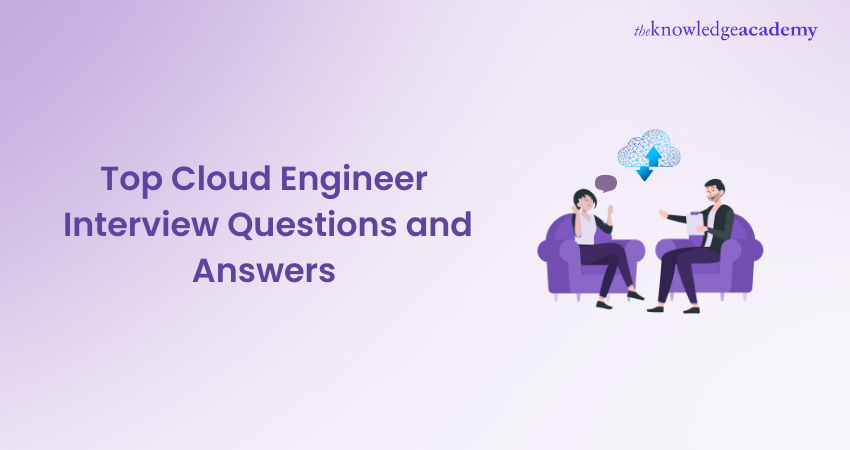
Ready to take your Cloud Engineering career to new heights? In today’s tech-driven world, Cloud Engineers are the pioneers in building and maintaining the digital ecosystems that businesses rely on. But before you can step into this crucial role, you’ll need to face Cloud Engineer Interview Questions that challenge your knowledge and problem-solving skills.
This isn’t just another list of questions—it’s your gateway to mastering the interview process. We’ve handpicked the most important Cloud Engineer Interview Questions to help you stand out. Ready to turn those clouds into your personal playground and land your dream job? Let’s dive in and make sure you’re prepared to impress from the very first question.
Table of Contents
1) Basic-level Cloud Engineer Interview Questions and Answers
2) Intermediate-level Cloud Engineer Interview Questions and Answers
3) Advanced-level Cloud Engineer Interview Questions and Answers
4) Conclusion
Basic-level Cloud Engineer Interview Questions and Answers
The following basic-level Cloud Engineer Interview Questions and Answers will test your core understanding of Cloud Computing. They focus on foundational concepts and key skills, setting the stage for your success in the Cloud Engineering field.
1) What are the primary service models of Cloud Computing?
The primary Service Models of Cloud Computing are Infrastructure as a Service (IaaS), Platform as a Service (PaaS), and Software as a Service (SaaS). IaaS provides virtualised computing resources over the internet, such as Amazon EC2.
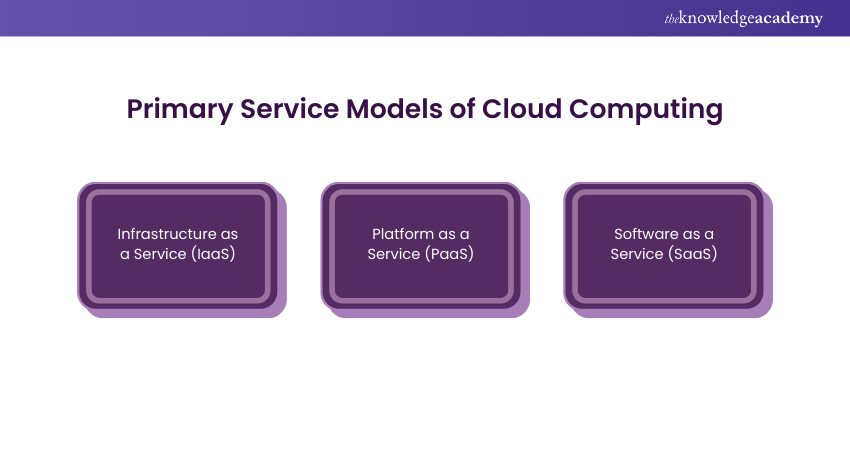
PaaS offers a platform for developers to build, deploy, and manage applications, like Google App Engine. SaaS delivers software applications over the internet on a subscription basis, with examples including Microsoft Office 365.
2) What is the difference between Public, Private, and Hybrid cloud?
Public cloud services are owned by third-party providers and deliver resources over the internet, such as AWS. Private cloud is used exclusively by a single organisation, either on-site or hosted by a third-party provider. Hybrid cloud combines Public and Private Clouds, allowing data and applications to be shared between them and optimising flexibility and existing infrastructures.
|
Type of cloud |
Public cloud |
Private cloud |
Hybrid cloud |
|
Ownership |
Owned by third-party providers |
Used exclusively by a single organisation |
Combination of Public and Private clouds |
|
Accessibility |
Resources delivered over the internet |
Resources can be on-site or hosted by a third-party |
Allows data and applications to be shared between Public and Private clouds |
|
Flexibility |
Highly flexible but less control over infrastructure |
Highly secure with full control over infrastructure |
Offers a balance of flexibility and control, optimising infrastructure use |
|
Example |
AWS, Google cloud |
On-premises private data centres |
Mix of AWS (Public) and an on-premises Private cloud |
3) How does a Content Delivery Network (CDN) function?
A CDN is a system of distributed servers that delivers web content based on the user’s geographic location, the origin of the webpage, and the content delivery server. Its primary purpose is to reduce latency, ensuring faster content delivery by bringing content closer to the user's location.
4) What do you understand by 'cloud bursting'?
This question assesses the candidate's understanding of cloud scalability mechanisms.
Here’s a Sample Answer:
“cloud bursting is a strategy used in Cloud Computing where an application running in a Private cloud automatically shifts to a Public cloud when the demand for computing resources exceeds the capacity of the Private cloud. This approach allows businesses to handle unexpected spikes in workload without over-investing in permanent infrastructure, ensuring flexibility and cost efficiency.”
5) Describe auto-scaling and its benefits.
Auto-scaling is a Cloud Computing feature that automatically adjusts cloud resources based on predefined policies, workload demands, or schedules. The benefits include cost efficiency, as you pay only for what you use, maintaining performance during demand spikes, and optimising resource allocation.
6) What are some key best practices for cloud cost management?
Key practices for cloud cost management include right-sizing resources to match workload needs, monitoring and analysing spend with cost management tools, setting budget alerts, using reserved instances for consistent workloads, and regularly cleaning unused resources like storage volumes and unattached IP addresses.
7) What is Cloud Computing?
Cloud Computing refers to the delivery of computing services over the internet, including storage, processing power, and applications. It allows users to access and store data and applications on remote servers rather than on local computers or servers, providing flexibility, scalability, and cost-efficiency.
8) What are the benefits of using Cloud Computing?
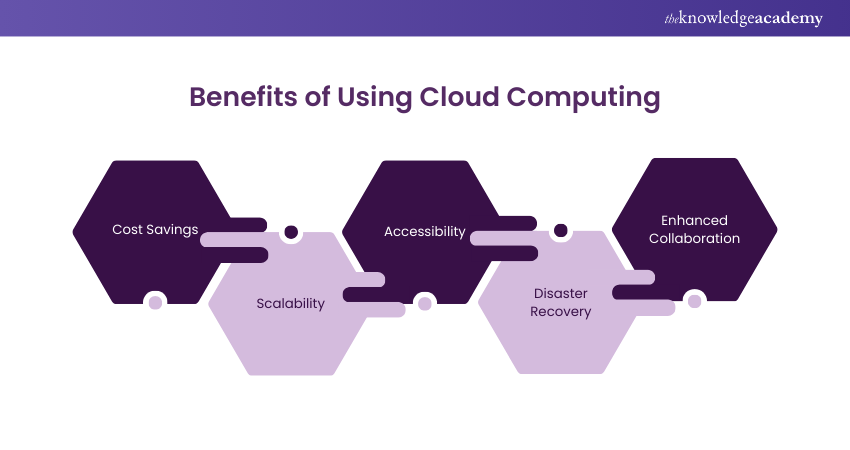
The Benefits of Cloud Computing include cost savings, as users only pay for what they use; scalability, allowing for easy resource expansion or reduction; accessibility from any location with internet access; disaster recovery options; and enhanced collaboration through shared access to data and applications.
9) Explain the concept of Virtualisation in Cloud Computing.
Virtualisation in Cloud Computing involves creating virtual versions of physical hardware, such as servers, storage devices, and network resources. It enables multiple virtual machines to run on a single physical machine, improving resource utilisation, flexibility, and scalability.
10) What are the differences between vertical and horizontal scaling in the cloud?
Vertical scaling involves increasing the capacity of a single server by adding more resources like CPU, RAM, or storage. Horizontal scaling, on the other hand, involves adding more servers or nodes to a system, allowing for the distribution of workloads across multiple machines.
Unlock the potential of Microservices Architecture with our expert-led Microservices Architecture Training - elevate your Cloud Computing skills today!
Intermediate-level Cloud Engineer Interview Questions and Answers
The following intermediate-level Cloud Engineer Interview Questions and Answers challenge your understanding of cloud technologies. They dive deeper into problem-solving and technical skills, preparing you for more complex scenarios in Cloud Engineering.
11) What are the key security concerns in Cloud Computing? How can they be addressed?
Key security concerns in Cloud Computing include data breaches, data loss, insecure APIs, and traffic hijacking. These can be addressed by implementing data encryption, multi-factor authentication, regular security audits, and robust backup and recovery plans to protect data and mitigate risks.
12) How would you ensure data security and compliance in the cloud?
This question assesses the candidate’s ability to manage security and compliance in a cloud environment.
Here’s a Sample Answer:
“To ensure data security and compliance in the cloud, I would implement strong encryption for data at rest and in transit, enforce multi-factor authentication for access control, and conduct regular security audits. Additionally, I would ensure compliance with industry regulations by staying updated on legal requirements and maintaining secure backups to protect against data loss.”
13) How do you manage sensitive data in the cloud?
This question evaluates the candidate’s approach to handling sensitive information within cloud environments.
Here’s a Sample Answer:
“When managing sensitive data in the cloud, I prioritise data classification, ensuring that sensitive information is clearly identified. I use encryption, both at rest and in transit, and implement access controls based on roles to limit exposure. Additionally, I use data masking and tokenisation techniques to protect data, ensuring that only authorised personnel can access the original information.”
14) How do you ensure the secure transmission of data to and from the cloud?
Secure data transmission to and from the cloud can be ensured by using Secure Socket Layer/Transport Layer Security (SSL/TLS), VPN tunnels for communication, and strict access controls to limit communication to authorised devices and networks, safeguarding data in transit.
15) What strategies would you employ to ensure a robust disaster recovery plan in the cloud?
This question examines the candidate's approach to disaster recovery in cloud environments.
Here’s a Sample Answer:
“For a robust disaster recovery plan, I would schedule regular backups of data, applications, and configurations, ensuring they are stored in multiple geographic regions. I would also conduct regular tests of recovery procedures to identify potential issues, keep detailed documentation of the recovery process, and update the plan regularly to adapt to any changes in infrastructure.”
16) A team struggles with slow data retrieval from the cloud, impacting their productivity. How would you resolve this?
This question assesses problem-solving skills related to performance issues in the cloud.
Here’s a Sample Answer:
“To resolve slow data retrieval, I would first analyse the architecture to identify bottlenecks. This might involve evaluating the distance between the data centre and the team, optimising the data retrieval code, or implementing caching mechanisms. If necessary, I would recommend moving to a cloud data centre closer to the team or using a Content Delivery Network to reduce latency.”
17) The finance department needs to use Cloud Computing tools for a month, a post they'll no longer need. How would you ensure cost-effectiveness?
This question tests the candidate's approach to cost management in temporary cloud usage.
Here’s a Sample Answer:
“For temporary needs like this, I would opt for a pay-as-you-go model, ensuring that the finance department only pays for the resources they use during that month. After the project, I would ensure that all resources are terminated or de-provisioned to avoid unnecessary costs. Additionally, I would set up alerts to monitor usage and prevent any unexpected charges.”
18) How do you ensure you stay updated with the rapidly evolving cloud technologies?
This question evaluates the candidate's commitment to continuous learning and staying current with technology.
Here’s a Sample Answer:
“I stay updated with cloud technologies by regularly attending webinars, workshops, and industry conferences. I also participate in online communities and forums where experts share the latest trends and developments.
Additionally, I subscribe to industry journals and newsletters. I also make a point of experimenting with new tools and features in my own time to understand their practical applications.”
19) How do you explain complex cloud-related issues to non-technical stakeholders?
This question assesses the candidate's ability to communicate technical concepts to a non-technical audience.
Here’s a Sample Answer:
“When explaining complex cloud-related issues to non-technical stakeholders, I use analogies and real-world examples that are relatable. I break down the information into simple, bite-sized chunks, focusing on the impact and solutions rather than technical details.
Visual aids like diagrams or flowcharts are also helpful to illustrate the points clearly. This ensures that the stakeholders understand the key concepts without being overwhelmed.”
20) What is cloud migration, and what challenges might you face during the process?
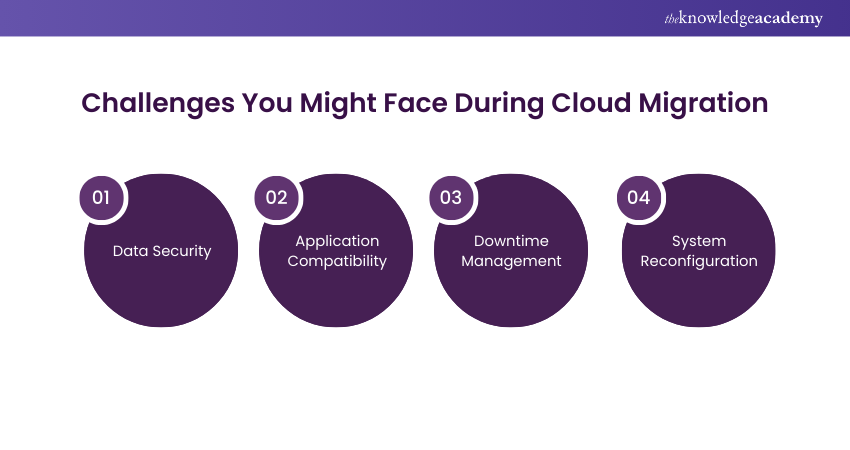
cloud migration is the process of moving data, applications, or other business elements from on-premises infrastructure to a cloud environment. Challenges might include ensuring data security during transfer, maintaining application compatibility, managing potential downtime, and reconfiguring systems to function optimally in the cloud environment.
Master Linux OpenStack Administration and elevate your cloud management skills with our expert-led Linux OpenStack Administration Training - start your journey today!
Advanced-level Cloud Engineer Interview Questions and Answers
Ready to excel? The following advanced-level Cloud Engineer Interview Questions and Answers will challenge your expertise, focusing on complex problems and strategic thinking in Cloud Engineering.
21) You're migrating a mission-critical application to the cloud. Halfway through, you encounter unexpected performance issues. How would you handle this?
This question assesses the candidate’s ability to troubleshoot and resolve complex issues during critical operations.
Here’s a Sample Answer:
“In such a scenario, my first step would be to pause the migration to prevent further complications. I would then analyse logs and use monitoring tools to identify the root cause of the performance issues, whether it’s related to resource allocation, configuration errors, or compatibility problems.
I would collaborate with the application team to optimise the cloud resources. Once the issues are resolved, I would resume the migration in phases, closely monitoring performance at each stage.”
22) A company's e-commerce application experiences sudden traffic spikes during sales, leading to downtime. How would you address this for future sales?
This question evaluates the candidate’s ability to implement proactive solutions to handle high-traffic events.
Here’s a Sample Answer:
“To prevent downtime during future sales, I would implement auto-scaling to automatically increase resources as traffic spikes. Additionally, I would use load balancers to distribute traffic across multiple servers, preventing any single server from becoming overwhelmed.
Integrating a Content Delivery Network would also help by ensuring users access the site from the nearest server, reducing latency. Finally, I would conduct stress testing before major sales events to identify and address potential issues.”
23) You receive a report that there's suspicious activity in the company's cloud environment, indicating a potential breach. What steps would you take?
This question assesses the candidate’s response to security incidents and their ability to mitigate risks.
Here’s a Sample Answer:
“Upon receiving a report of suspicious activity, my immediate action would be to initiate the incident response plan. I would isolate the affected areas to contain the breach and conduct a preliminary assessment to determine the extent and source of the intrusion. I would inform senior management and any relevant stakeholders, including legal and regulatory bodies, if necessary.
Collaborating with the cybersecurity team, I would work on patching vulnerabilities and reinforcing security measures. After the incident, I would conduct a thorough investigation to prevent future breaches and update security protocols based on the findings.”
24) How do you handle a situation where you disagree with a team member about a cloud solution approach?
This question evaluates the candidate’s ability to collaborate and manage conflicts within a team.
Here’s a Sample Answer:
“I believe open communication is key in resolving disagreements. First, I would listen to the team members’ perspectives to fully understand their rationale. I would then present my viewpoint, supported by data and analysis.
If we still disagree, I would suggest prototyping both solutions to see which one performs better or seeking input from other team members or experts. The ultimate goal is to ensure that the chosen solution is in the best interests of the project and the organisation.”
25) Describe a challenging cloud project you’ve worked on and how you overcame the challenges.
This question assesses the candidate’s problem-solving abilities and experience in handling complex cloud projects.
Here’s a Sample Answer:
“In a previous role, I worked on migrating a legacy application to the cloud, which was challenging due to its tightly coupled components. To overcome this, I collaborated closely with the software development team to refactor parts of the application, making them more modular and compatible with Cloud Architecture.
We conducted extensive testing to ensure there were no performance or security issues post-migration. Through teamwork and proactive problem-solving, we managed a smooth transition, and the application now benefits from the scalability and flexibility of the cloud.”
26) Can you describe a time when you made an error in your work and how you resolved it?
This question assesses the candidate’s ability to take responsibility for mistakes and learn from them.
Here’s a Sample Answer:
“Once, while setting up a new cloud environment, I mistakenly misconfigured access controls, inadvertently providing broader access than intended. When I realised the error during a routine audit, I immediately corrected the configuration and informed my team.
We reviewed the access logs to ensure no unauthorised access occurred. Following this incident, I adopted a peer-review approach for critical configurations, ensuring that all settings were double-checked before implementation. This experience taught me the importance of thoroughness and collaboration in maintaining security.”
27) How would you implement a multi-cloud strategy for an organisation?
This question evaluates the candidate’s strategic thinking and ability to manage complex cloud environments.
Here’s a Sample Answer:
“Implementing a multi-cloud strategy involves leveraging multiple cloud service providers to meet different organisational needs, reducing dependency on a single provider. I would begin by assessing the organisation’s goals and workloads to determine which providers offer the best services for each need.
Next, I would design an architecture that ensures interoperability between clouds, possibly using containerisation or APIs. I would also implement robust security measures and a unified monitoring system to manage resources across different clouds efficiently. Finally, I would create a disaster recovery plan that leverages the strengths of each provider, ensuring resilience and continuity.”
28) Explain the process of optimising cloud costs for a large enterprise.
The following are the steps to optimise cloud costs for a large enterprise:
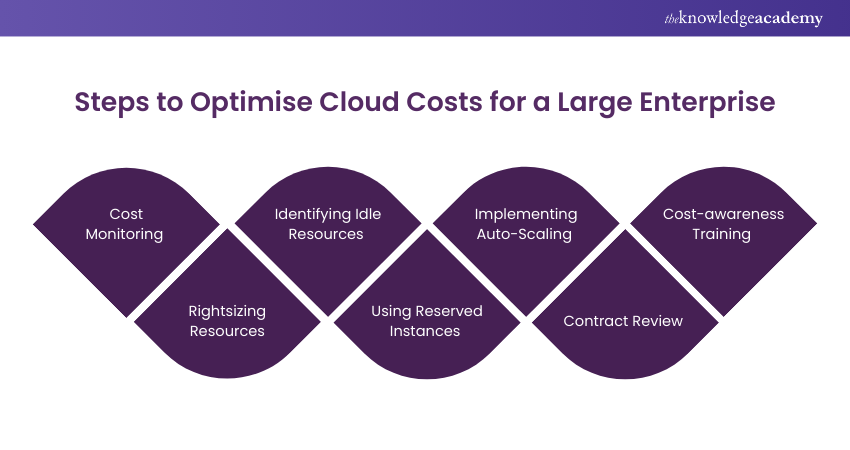
1) Cost Monitoring: Implement comprehensive monitoring tools to track and analyse current cloud spending.
2) Right-sizing Resources: Adjust resources to match actual usage patterns, scaling down over-provisioned instances.
3) Identifying Idle Resources: Detect and eliminate underutilised or idle resources to avoid unnecessary costs.
4) Using Reserved Instances: For predictable workloads, use reserved instances to benefit from discounted rates.
5) Implementing Auto-scaling: Set up auto-scaling to dynamically adjust resources based on demand, preventing over-provisioning.
6) Contract Review: Regularly review and renegotiate contracts with cloud providers to ensure competitive pricing.
7) Cost-awareness Training: Educate teams on cost-effective practices and set budget alerts to avoid overspending.
29) How would you approach the integration of legacy systems with modern cloud services?
This question evaluates the candidate’s ability to bridge old and new technologies within an organisation.
Here’s a Sample Answer:
“Integrating legacy systems with modern cloud services requires careful planning and a phased approach. First, I would conduct a thorough assessment of the legacy systems to understand their architecture and dependencies. Then, I would identify which parts of the system can be modernised or migrated to the cloud without disrupting business operations.
For components that need to remain on-premises, I would use APIs or middleware to enable communication with cloud services. Throughout the process, I would ensure data integrity and security and test the integration extensively before full deployment to minimise risks and ensure a seamless transition.”
30) How would you design a secure Cloud Architecture for a new application?
This question assesses the candidate's ability to architect secure systems in the cloud.
Here’s a Sample Answer:
“When designing a secure Cloud Architecture, I start by implementing strong access controls and encryption for both data at rest and in transit. I ensure that all APIs are secured and that security groups and firewalls are properly configured to limit access.
I also incorporate multi-factor authentication and conduct regular security audits to identify and address vulnerabilities. Additionally, I adhere to best practices for network security, including VPNs and private subnets, to protect the application from potential threats.”
Transform your understanding of Cloud Computing with Cloud Computing Courses that offer practical skills and real-world applications for immediate impact!
Conclusion
Mastering these Cloud Engineer Interview Questions is your gateway to unlocking a successful career in Cloud Engineering. By mastering the basics, conquering intermediate challenges, and confidently tackling advanced scenarios, you’ll position yourself as a top candidate ready to lead in this dynamic and ever-evolving field. Your Cloud Engineering journey starts here - are you ready to soar?
Become a certified AI Cloud professional - start your Certified Artificial Intelligence (AI) For Cloud Professionals Training today!
Upcoming Cloud Computing Resources Batches & Dates
Date
 Amazon AWS Keyspaces Training Course
Amazon AWS Keyspaces Training Course
Fri 28th Mar 2025
Fri 23rd May 2025
Fri 25th Jul 2025
Fri 26th Sep 2025
Fri 28th Nov 2025






 Top Rated Course
Top Rated Course



 If you wish to make any changes to your course, please
If you wish to make any changes to your course, please


